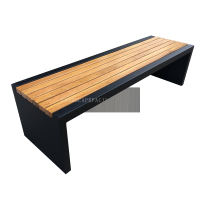Welcome to the website for landscape facilities products and knowledge.
How does the table’s design facilitate the use of collaborative gaming or team-building exercises?
In today's interconnected workplace and social environments, table design has evolved beyond mere functionality to become a crucial element in fostering collaboration. Modern tables specifically engineered for collaborative gaming and team-building exercises incorporate several innovative features that significantly enhance group interaction.
The fundamental aspect of these specialized tables is their shape. Circular or oval tables without sharp corners eliminate physical and psychological barriers, creating an inclusive atmosphere where all participants feel equally positioned and engaged. This democratic arrangement encourages open communication and ensures every team member can maintain eye contact, which is vital for strategy development during gaming sessions or problem-solving activities.
Modularity represents another critical design element. Many collaborative tables feature interchangeable components, removable sections, or expandable surfaces that can be reconfigured based on specific activity requirements. This adaptability allows the same table to accommodate different group sizes and activity types—from board game tournaments requiring multiple playing zones to team-building exercises that need separate workstations. The flexibility extends to height-adjustable models that support both seated and standing positions, catering to various physical preferences and energy levels throughout extended sessions.
Integrated technology has become increasingly important in collaborative table design. Built-in power outlets, USB charging ports, cable management systems, and even wireless charging surfaces ensure that electronic devices remain powered without creating clutter or tripping hazards. Some advanced designs incorporate touchscreen surfaces or compatibility with augmented reality tools, seamlessly blending physical and digital gameplay elements. This technological integration prevents interruptions during critical collaborative moments and supports hybrid activities involving both in-person and remote participants.
Material selection and surface treatment further contribute to the collaborative experience. Durable, scratch-resistant surfaces withstand heavy use while providing optimal conditions for writing, drawing, or moving game pieces. Sound-absorbing materials help control acoustics in lively gaming environments, while non-reflective finishes reduce glare during detailed tasks. Some designs incorporate writable surfaces for spontaneous brainstorming or keeping score, transforming the entire table into an interactive tool.
Ergonomics plays a crucial role in maintaining engagement during extended sessions. Contoured edges provide comfortable arm support, while adequate legroom accommodates various body types and postures. The inclusion of dedicated storage solutions for game pieces, timers, or team-building materials keeps essential items accessible yet organized, minimizing disruptions to the collaborative flow.
Beyond physical attributes, psychological considerations inform these designs. Warm material tones and organic shapes create inviting environments that lower inhibitions and encourage participation. Strategic lighting integration enhances focus on game elements or shared documents without causing eye strain. These subtle elements contribute significantly to creating spaces where teams feel comfortable experimenting, taking risks, and building trust—the essential components of successful collaboration.
The most effective collaborative tables balance aesthetic appeal with practical functionality, serving as neutral territory where hierarchy diminishes and creative problem-solving flourishes. Whether supporting complex role-playing games that require extensive reference materials or hosting team-building exercises demanding shared physical space, these thoughtfully designed surfaces become active participants in the collaborative process rather than passive platforms.
As remote work and digital entertainment continue to grow, the demand for furniture that facilitates meaningful in-person interaction has never been greater. The evolution of table design specifically for collaborative purposes represents a recognition that the spaces and tools we use significantly influence how we connect, communicate, and create together.
Related search:

Recommendation
Modern Stainless Steel Begonia Wood Park Chair Outdoor Courtyard Leisure Sun Protection Bench Long Seat